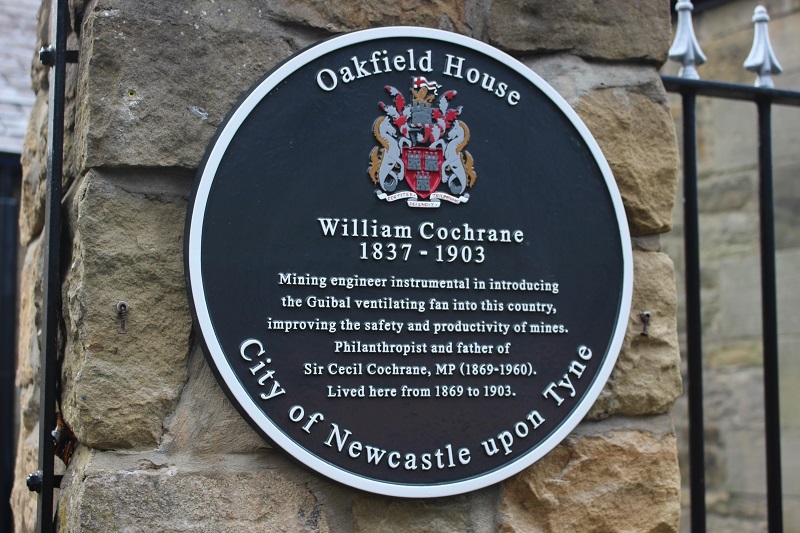.jpg)
See pictured with Mrs Harris, a commemorative plaque to William Cochrane who lived at Oakfield House (our main school building).
Although the plaque commemorates William Cochrane’s contribution to the mining industry and his philanthropy, Cochrane is important to the history of Westfield because it is believed that a red camellia and a white camellia were planted in the garden at Oakfield House on his and his wife’s tenth wedding anniversary. Only a pink tree grew and was carefully preserved as the oldest camellia in this country. This is why our school emblem is a pink camellia!
More on William Cochrane:
In addition to his link with Westfield, William Cochrane was responsible for the rebuilding of All Saint’s Church in Gosforth ‘no doubt that, without Mr. Cochrane, the church would never have been completed in all its present glory.’[1] Cochrane also founded the Sick Children’s Hospital and served as their honorary secretary for 25 years.[2]
As well as his philanthropic work, William Cochrane was a Mining Engineer at Elswick Colliery, he was described as ‘a brilliant, shrewd, and efficient businessman, it was his driving force and foresight that kept the momentum going through constant setbacks.[3] He is mentioned in the Grace’s Guide to British Industrial History, ‘In 1857 he went north to superintend the development of Elswick, Tursdale, and New Brancepeth Collieries. His abilities as a mining engineer were soon recognised, and he was frequently engaged as a professional witness in important mining cases and arbitrations.’ [4] Cochrane was also a past president of the mining Institute[5] and was instrumental in introducing the Guibal ventilating fan into this country.[6]
Grace’s Guide also mentions that Cochrane helped found the Durham College of Science (a forerunner of the University of Newcastle-on-Tyne)[7], and was a member of its Council from the commencement. ‘Attempts to realise a place for the teaching of sciences in the city were finally met with the foundation of the College of Physical Science in 1871. The college offered instruction in mathematics, physics, chemistry and geology to meet the growing needs of the mining industry, becoming the Durham College of Physical Science in 1883’. [8] The University of Durham in 1901 conferred upon him the honorary degree of Master of Science.[9]
William Cochrane died on 25th November 1903 at Oakfield House. His son, Sir Cecil Cochrane lived at Oakfield House until his death in 1960. Oakfield House was then purchased by the founders of the school.[10]
Thank you to Mrs Harris who researched William Cochrane and put the case for a commemorative plaque, in recognition of his contribution to the City of Newcastle and connection to Westfield, to Newcastle City Council.
Due to Covid 19, we were unable to host the Lord Mayor ceremony to officially unveil the plaque, but we do hope to rearrange this in the future.
It has a prominent position on Elmfield Road and it’s great to see so many people stop to admire it already.
[1] http://allsaintsgosforth.wixsite.com/all-saints-gosforth/all-saints-history
[2] https://mininginstitute.org.uk/about-us/past-presidents-of-the-institute/william-cochrane/
[3] http://allsaintsgosforth.wixsite.com/all-saints-gosforth/all-saints-history
[4] https://www.gracesguide.co.uk/William_Cochrane
[5] https://mininginstitute.org.uk/about-us/past-presidents-of-the-institute/william-cochrane/
[6] https://www.gracesguide.co.uk/William_Cochrane
[7] https://en.wikipedia.org/wiki/Edward_Fenwick_Boyd
[8] https://collegelist.co.uk/newcastle-university-history/
[9] https://www.gracesguide.co.uk/William_Cochrane
[10] https://en.wikipedia.org/wiki/Westfield_School,_Newcastle_upon_Tyne




